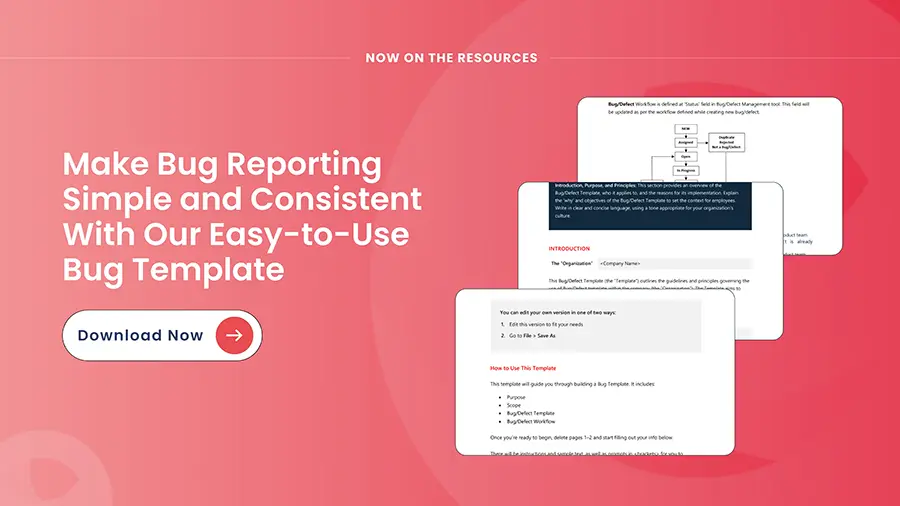The heavy machinery and manufacturing industries rely on PLC devices to run their day-to-day operations. A Programmable Logic Controller is a type of tiny computer that can receive data through its inputs and send operating instructions through its outputs. Fundamentally, a PLC’s job is to control a system’s functions using the internal logic programmed into it. Businesses around the world use PLCs to automate their most important processes.
As industries advance toward Industry 4.0 and increased automation, PLC devices must be tested and automated thoroughly before deployment or upgrades. This article gives a complete understanding of what PLC test automation is, why it is imperative to automate PLCs, how it can streamline operations and improve efficiency, and what key challenges you may face — plus how to overcome them.
What is PLC Test Automation?
PLC (Programmable Logic Controller) test automation refers to the use of automated testing techniques and tools to verify the functionality, performance, and reliability of PLC programs that control industrial automation processes.
It involves designing and implementing automated tests that simulate real-world scenarios and validate the PLC programs against expected results. PLC test automation helps in improving the quality and efficiency of PLC programming by identifying defects, reducing manual testing efforts, and accelerating the testing process.
Here are some technical implementation examples of PLC test automation:
- Unit Testing with PLC simulation software: PLC simulation software, such as PLC simulators or emulators, can be used to simulate the PLC in a virtual environment. Automated unit tests can be written using PLC programming languages, such as ladder logic or function block diagram, to validate individual components or modules of a PLC program. For example, in a ladder logic program, a unit test can be written to simulate the input conditions, execute the ladder logic rungs, and verify the output results.
- Automated script-based testing: Test automation tools, such as Selenium or Cucumber, can be used to automate the testing of PLC programs. Scripts can be written in a scripting language, such as Python or C#, to interact with the PLC program and do validation. For example, a script can be written to send inputs to the PLC program, monitor the outputs, and compare them against expected results.
- Test frameworks for PLC testing: Test frameworks can be developed using programming languages, such as C++ or Java, to provide a structured and organized approach to PLC test automation. These frameworks can include libraries, APIs, and utilities that can be used to develop automated tests for PLC programs. For example, a test framework can provide functions or classes to simulate inputs, capture outputs, and compare them against expected values.
- Simulation-based testing: Simulation software, such as Simulink or LabVIEW, can be used to simulate PLC programs and validate their performance. These tools allow for the creation of virtual environments that mimic the behavior of real-world industrial processes. Automated tests can be developed using these tools to simulate different scenarios, such as varying inputs or changing process conditions, and validate the response of the PLC program.
- Hardware-in-the-loop (HIL) testing: HIL testing involves connecting the PLC program to a real or virtual hardware environment. Automated tests can be developed to send inputs to the PLC program, monitor the outputs, and validate their correctness. For example, a PLC program controlling a robotic arm can be connected to a virtual or real robotic arm, and automated tests can be developed to validate the arm’s movement, speed, and accuracy.
- PLC code analysis tools: PLC code analysis tools, such as static or dynamic code analyzers, can be used to identify potential defects or vulnerabilities. These tools can be integrated into the automated testing process to analyze the PLC program’s code and provide feedback on potential issues, such as uninitialized variables, unreachable code, or redundant logic.
Learn how to reduce testing time by involving business users and using reusable, visual test components.
Why Automate PLC Testing? (Benefits)
PLC test automation has numerous benefits that can help companies maximize their efficiency. Firstly, it reduces the time and effort required for manual testing, allowing engineers to focus on more important tasks. With automated testing, engineers can quickly identify and fix errors, leading to faster product development cycles.
- Consistency: Eliminate variations in testing that can occur with manual testing. This ensures consistency in the testing process and the results, which is essential in a manufacturing environment.
- Improved Quality: Test Automation can detect defects early in the development cycle, which helps improve the quality of the product. This is especially important in the manufacturing industry, where quality is critical for customer satisfaction and safety.
- Real-time data acquisition: By monitoring the PLC in real-time, automated testing tools can identify irregularities, errors, and malfunctions as they occur, providing insight into the system’s performance and ensuring that issues are resolved quickly. It helps to improve the efficiency and accuracy of the testing process, reducing the risk of errors and defects and resulting in higher quality products.
- Increased Efficiency: Its faster performance helps reduce the time required to test the PLC and accelerate the development cycle, which is essential in a fast-paced manufacturing environment.
- Real-time Monitoring: It monitors the PLC in real-time, detecting issues as they occur and allowing for immediate corrective action. This helps prevent downtime and reduces the risk of product defects.
- Integration with other Systems: Integration with other systems and tools, allowing for more comprehensive and accurate testing of the PLC. This helps improve the accuracy and efficiency of the testing process and can reduce the risk of errors in the manufacturing process.
- Regulatory Compliance: It provides a documented and auditable testing process. This is particularly important in the manufacturing industry, where compliance with regulations such as ISO 9001 and FDA regulations is essential.
- Real-time simulation: By simulating real-world scenarios, automated testing tools can identify potential issues and defects in the PLC, allowing developers to make necessary adjustments and improvements before deploying it in a live environment. This helps to ensure that the PLC performs optimally and reliably in all conditions, ultimately leading to higher quality products and increased customer satisfaction.
How PLC Test Automation Streamlines Operations & Improves Efficiency
Here are some actionable ways automation improves operations:
- Faster commissioning: Automated test suites validate modules quickly before deployment, reducing commissioning time on the production floor.
- Fewer unplanned stoppages: Early detection of logic errors or inefficiencies in PLC code means less downtime later.
- Higher throughput and less waste: Better quality control via automated testing means fewer defects, re-work or scrap, leading to improved productivity.
- Better maintenance and scalability: Test automation frameworks allow regression tests when PLC logic or hardware changes — enabling safe and efficient upgrades.
- Improved stakeholder collaboration: Automated reports and dashboards give maintenance, operations and engineering teams real-time insight into PLC performance and test coverage.
- Cost reduction: Automation reduces the need for manual testing resources, shortens project schedules and lowers risk, thereby reducing TCO.
Challenges in Implementing PLC Test Automation & How to Overcome Them
While the benefits are substantial, implementing PLC test automation isn’t without its challenges. Here are some common obstacles and mitigation approaches:
- Complex PLC Programs:
Challenge: PLC programs can be complex and extensive, making it challenging to automate testing.
Solution: Develop a structured approach to test automation by defining test cases, test data, and expected results. Use a robust testing framework that supports the complexity of PLC programs and provides tools for test development, execution, and reporting. Utilize automated testing techniques such as unit testing, integration testing, and regression testing to verify the functionality of PLC programs.
- Variability in PLC Platforms:
Challenge: There are various PLC platforms available in the market with different programming languages, hardware, and software features, which can pose challenges in creating a standardized test automation solution.
Solution: Develop a flexible and modular test automation framework that can adapt to different PLC platforms. Use configuration files or parameterization to enable easy customization for different PLC platforms. Utilize libraries or APIs provided by PLC manufacturers to interact with PLCs in a consistent manner across different platforms.
- Real-time Testing:
Challenge: PLC systems often operate in real-time, making it challenging to implement effective test automation.
Solution: Use simulation and emulation techniques to replicate real-time environments in a controlled test environment. Utilize virtual PLCs or hardware-in-the-loop (HIL) testing to simulate real-time conditions and verify the performance of PLC programs. Use appropriate timing and synchronization mechanisms in the test automation framework to ensure accurate real-time testing.
- Lack of Testing Standards:
Challenge: Unlike software development, there are no standardized testing methodologies or frameworks for PLC testing, which can make it challenging to establish a consistent testing approach.
Solution: Develop internal testing standards based on industry best practices and guidelines. Leverage existing standards such as ISO 9646, IEC 61131-3, and IEC 61508 for guidance on PLC testing. Establish a clear test strategy, including test objectives, scope, and criteria for passing or failing tests. Develop standardized test templates or frameworks that can be reused across different PLC projects.
- Integration with Legacy Systems:
Challenge: Many industrial automation processes rely on legacy PLC systems, which may not have built-in support for test automation.
Solution: Develop custom interfaces or use third-party tools that enable integration between the legacy PLC systems and the test automation framework. This may involve using protocols such as Modbus, OPC-UA, or Ethernet/IP to communicate with PLCs and gather data for testing. Implement robust error handling and fallback mechanisms to handle potential communication failures with legacy systems.
- Skillset and Training:
Challenge: PLC test automation requires specialized skills and knowledge of PLC programming, industrial automation, and testing techniques.
Solution: Invest in training and development programs for the team to acquire the necessary skills for PLC test automation. Collaborate with vendors or consultants who have expertise in PLC testing to provide guidance and support during the implementation phase. Foster knowledge sharing within the team and establish a culture of continuous learning to improve the skillset of team members.
- Maintenance and Scalability:
Challenge: PLC systems are often part of critical industrial processes that require continuous operation, and any disruption in testing or maintenance can impact production.
Solution: Implement a robust version control system to manage changes in PLC programs and test scripts. Develop a maintenance plan that includes regular updates, bug fixes, and backup and recovery strategies. Test the scalability of the automation solution by simulating different load scenarios and optimizing performance. Utilize remote monitoring and management tools to minimize disruptions to production processes during maintenance activities.
Tips to Improve Efficiency with PLC Test Automation
PLC test automation can be a game-changer for improving efficiency in industrial processes. However, there are certain tips that can help you maximize the benefits of this technology.
Firstly, it is important to have a clear understanding of the testing requirements and objectives. This will help you design and implement the most appropriate testing strategy.
Secondly, invest in a reliable and flexible test automation tool that can handle various types of PLCs and testing scenarios. This will save you time and effort in the long run.
Thirdly, make sure to use a standardized testing approach across all your PLCs to ensure consistency and accuracy.
Finally, review and update your testing procedures regularly to keep up with changes in your industrial processes and technology advancements.
Conclusion
PLC test automation can greatly maximize efficiency in industrial processes. By automating the testing process, companies can save time and resources while ensuring accurate and reliable results. The use of automated test systems also reduces the risk of human error, which can lead to costly mistakes and downtime.
Enhops works with clients across the globe to implement test automation by co-innovating with our partners in areas of test automation, test advisory and consulting, test managed services, and in extending their QA teams.
Our expertise lies in financial, retail, manufacturing, etc to strengthen quality assurance and quality engineering practices to create a long-term and sustainable quality strategy.
So, if you want to stay ahead of the competition, consider implementing PLC test automation in your industrial processes today. To know more Contact Us.




